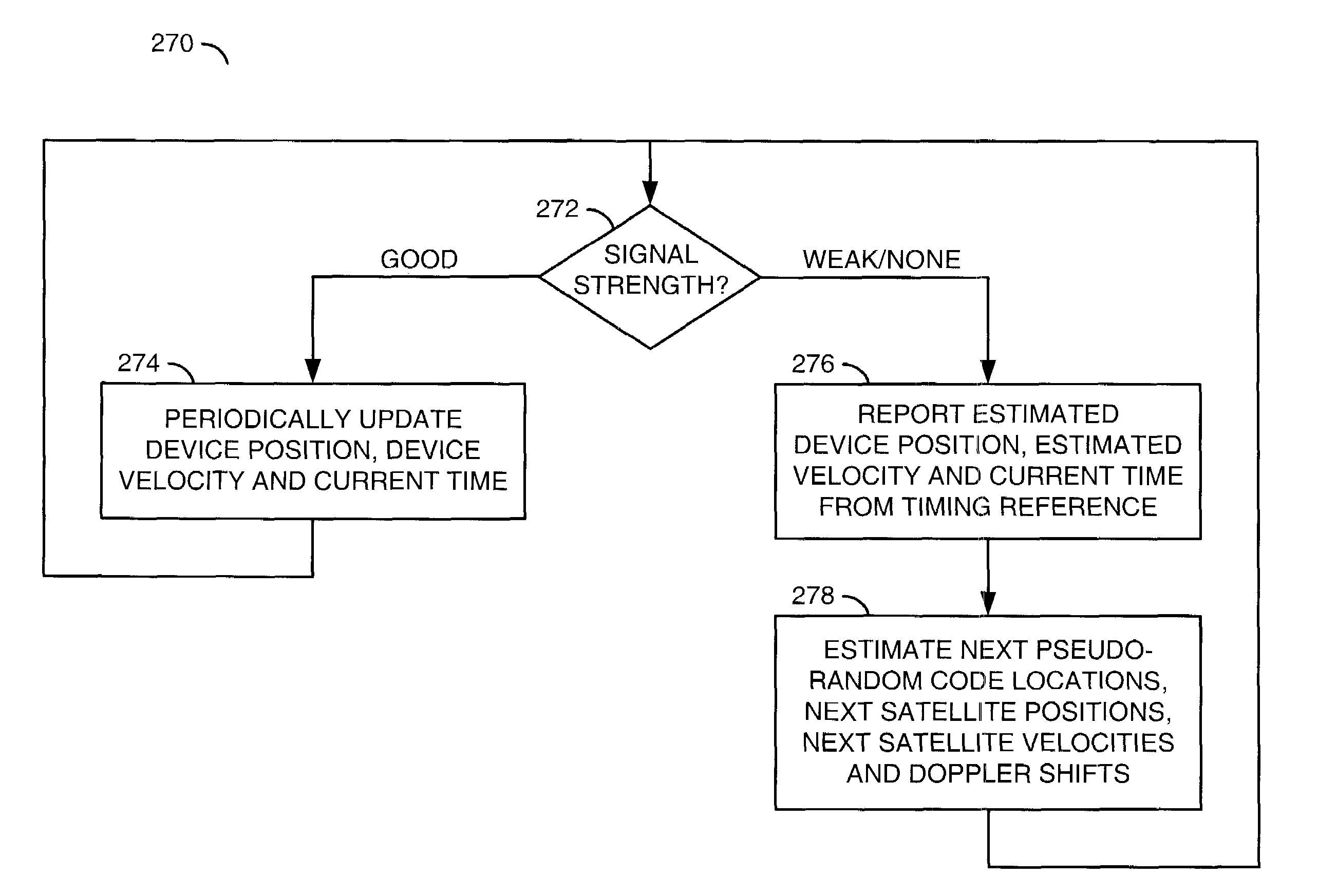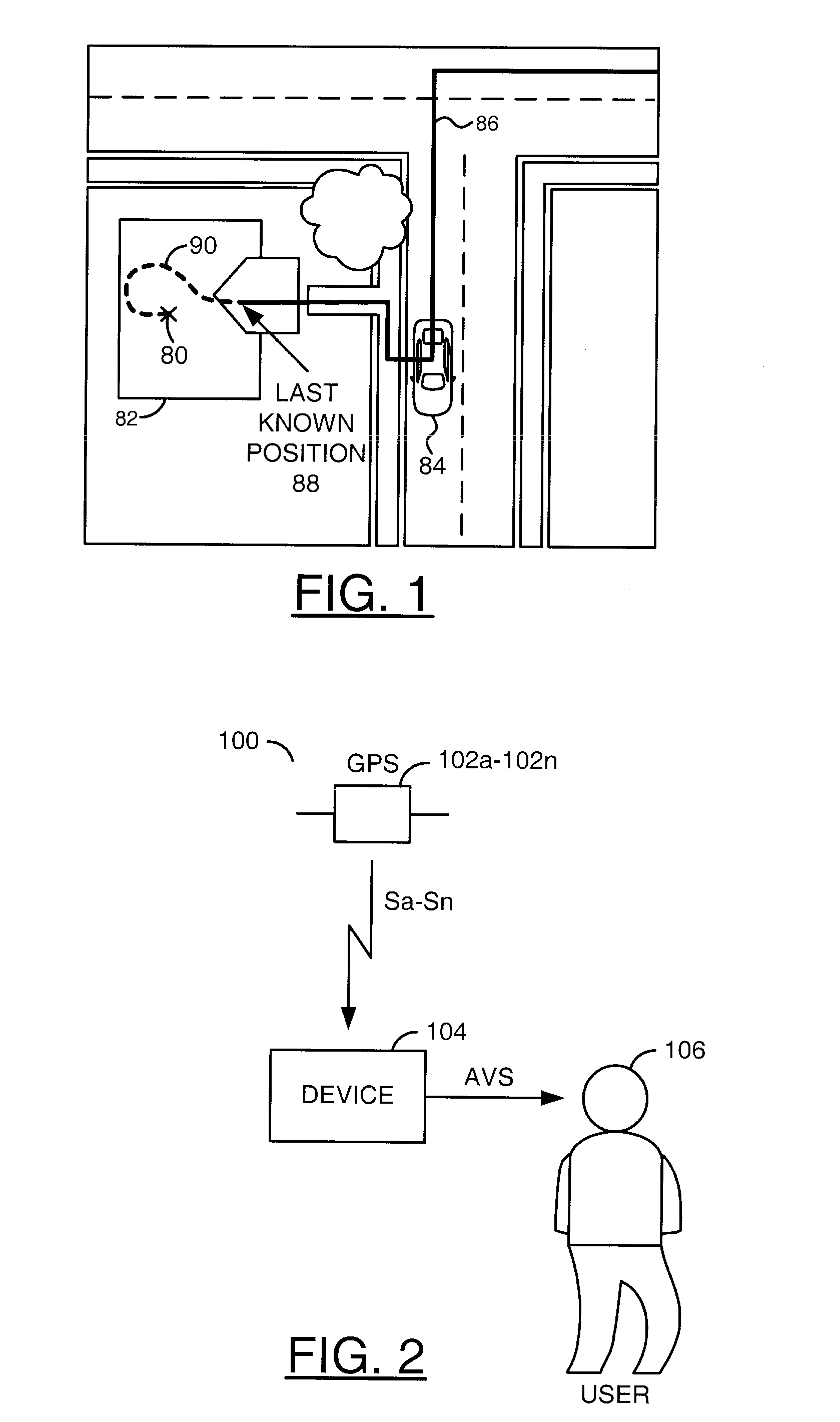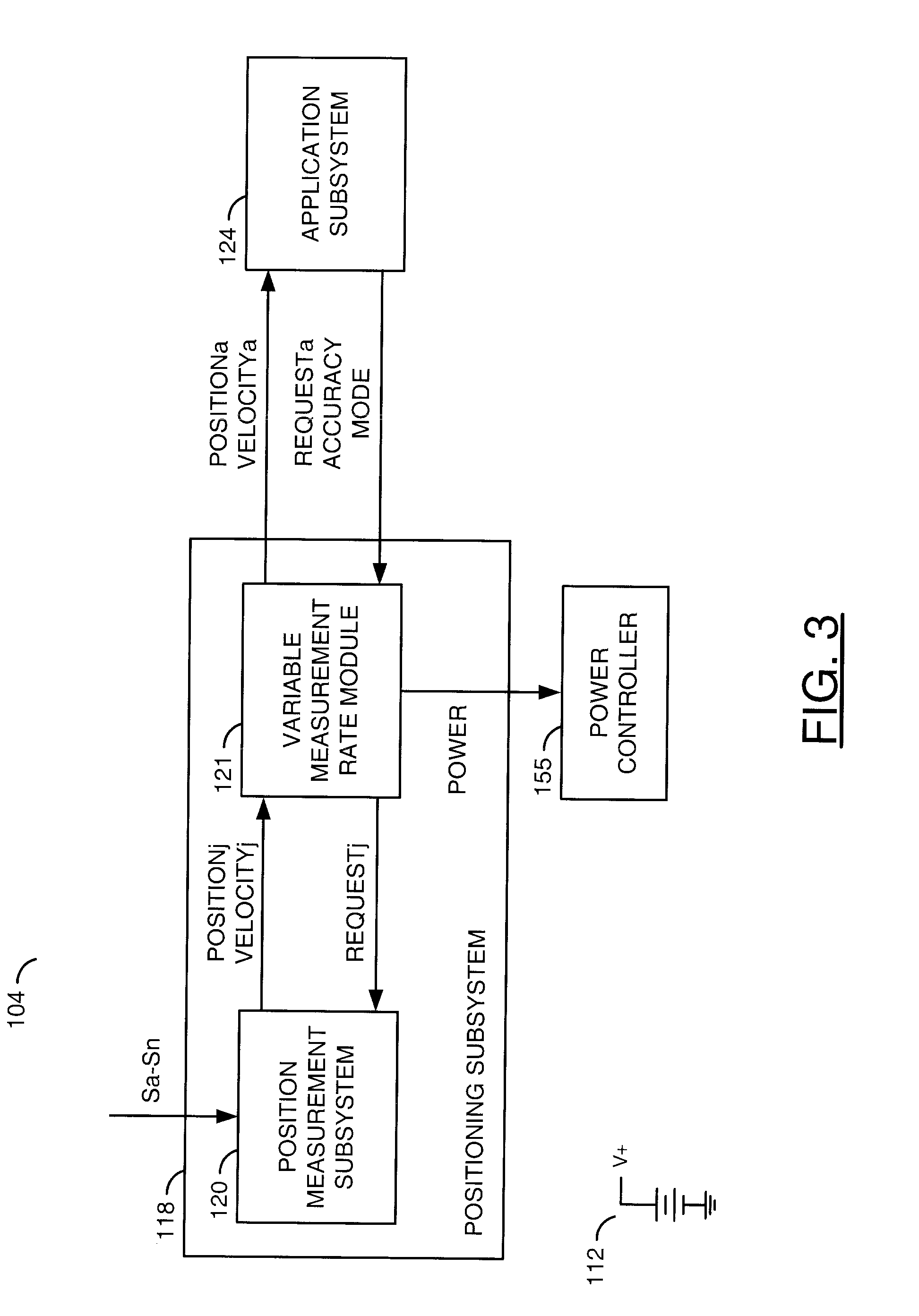Last known position reporting for always-on global positioning system receiver
a global positioning system and receiver technology, applied in the field of satellite positioning receiver methods and/or architecture, can solve the problems of complex signal acquisition under the 142 dbm power level, high cost of reacquiring phase lock, and inability to accurately report position, etc., to achieve optimal position reporting capabilities and accurate solution for reporting position
- Summary
- Abstract
- Description
- Claims
- Application Information
AI Technical Summary
Benefits of technology
Problems solved by technology
Method used
Image
Examples
Embodiment Construction
[0021]An advanced Global Positioning System (GPS) receiver architecture in accordance with the present invention is “always-on” and thus always aware of the current location. An always-on GPS receiver is generally capable of reporting last measured locations in weak signal environments, as an alternative to the legacy solutions that report the current location as unknown. Under many circumstances appropriate for consumer equipment, reporting the last known position of the GPS receiver is both (i) an efficient solution and (ii) an accurate solution. The always-on GPS receivers may be suitable for integration into battery operated, mobile headsets (often using a Bluetooth communications protocol) used in conjunction with cell phones.
[0022]Referring to FIG. 1, a diagram of an example scenario where an always-on GPS receiver 80 reports a last known position is shown. The receiver 80 may be carried by a user heading for home 82 in a car 84. While the receiver 80 has good reception of the...
PUM
 Login to View More
Login to View More Abstract
Description
Claims
Application Information
 Login to View More
Login to View More - R&D
- Intellectual Property
- Life Sciences
- Materials
- Tech Scout
- Unparalleled Data Quality
- Higher Quality Content
- 60% Fewer Hallucinations
Browse by: Latest US Patents, China's latest patents, Technical Efficacy Thesaurus, Application Domain, Technology Topic, Popular Technical Reports.
© 2025 PatSnap. All rights reserved.Legal|Privacy policy|Modern Slavery Act Transparency Statement|Sitemap|About US| Contact US: help@patsnap.com



